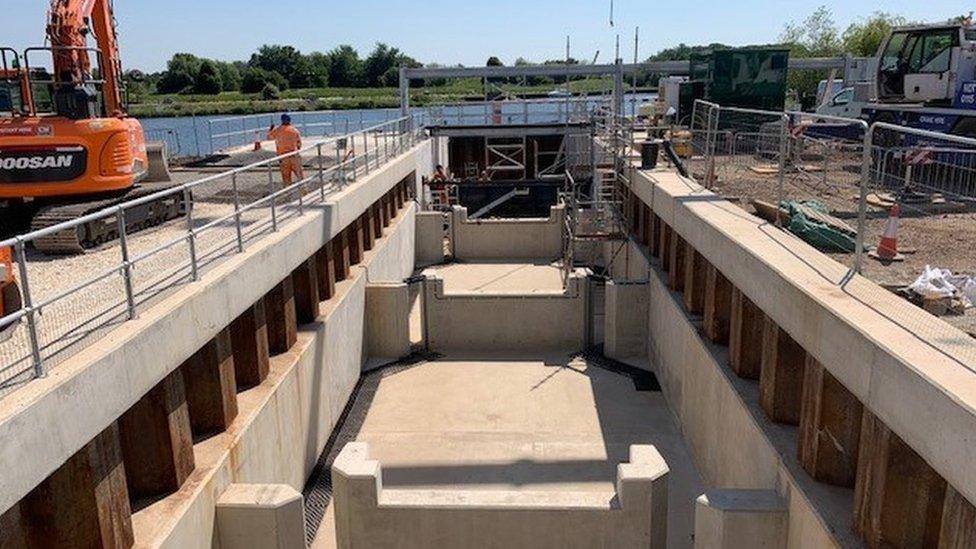How England's largest 'fish motorway' actually works
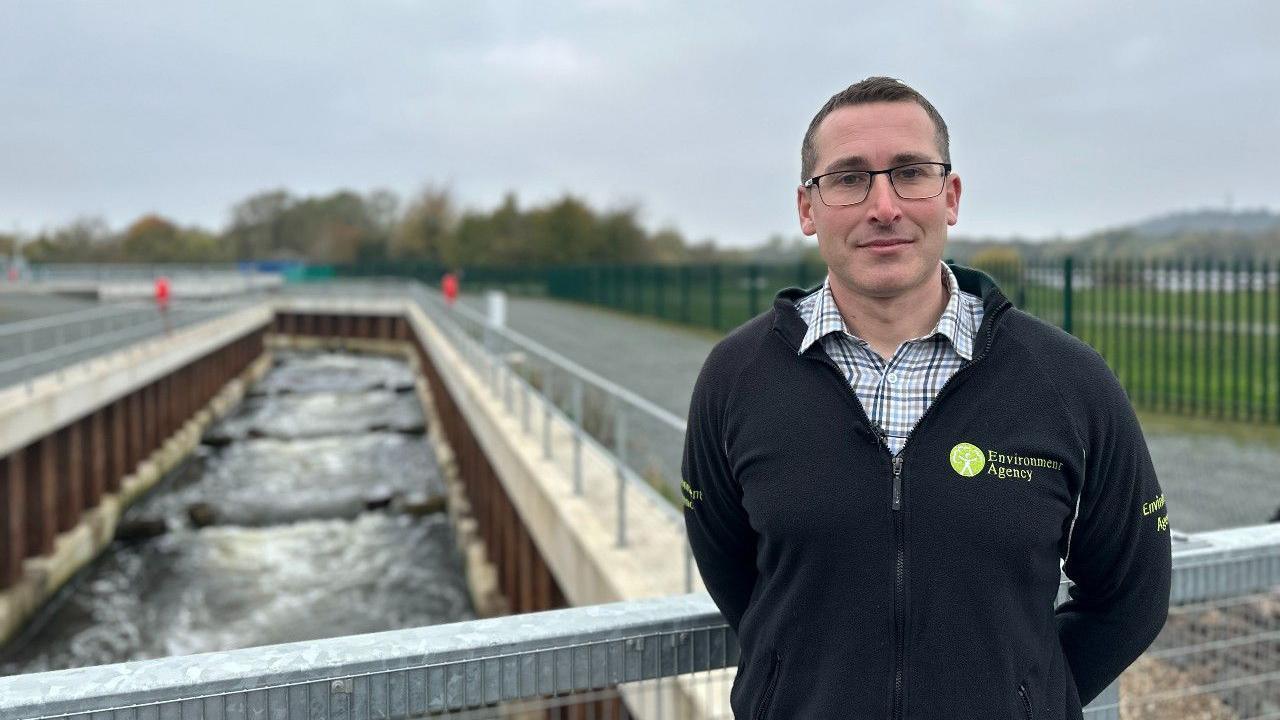
Steve Lawrie, from the Environment Agency, described the new Colwick (Holme Sluices) fish pass on the River Trent as "momentous"
- Published
The largest fish pass in England - being landed for £12m - officially opened in Nottinghamshire last week.
The Colwick (Holme Sluices) fish pass is 200m (656ft) long, 6m (19.7ft) deep and 6.5m (21.3ft) wide - but what does it actually do?
"Essentially it is a motorway for fish," said Steve Lawrie, from the Environment Agency, which is behind the project.
"It's fantastic. It's a momentous occasion where we can start to realise the ecological benefits the pass will bring."
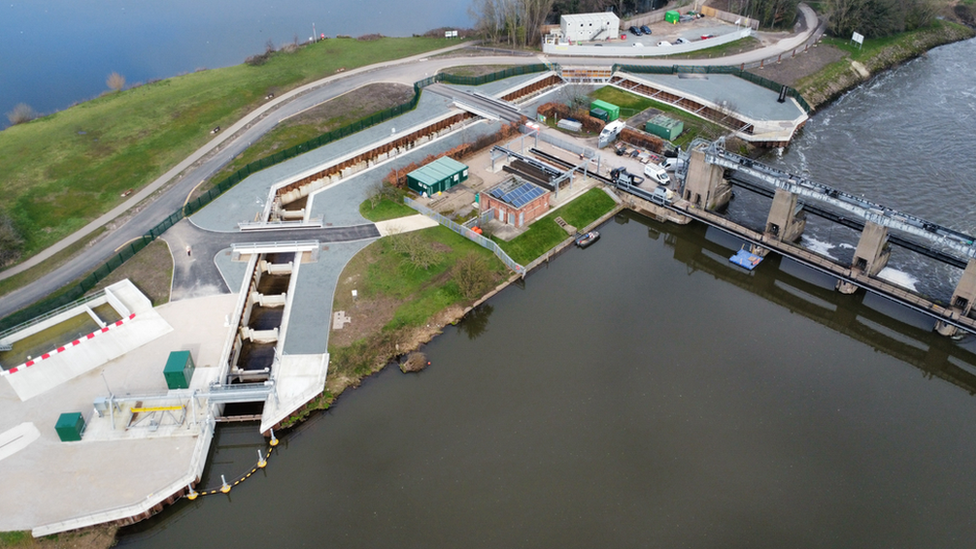
The pass has been planned for more than a decade, and taken more than two years to build
More than a decade in planning and two years in construction, it is designed to boost the fish population, as well as improve the wider natural environment.
It is built around Holme Sluices, in Colwick, which are part of a 1950s flood defence scheme on the notoriously unpredictable River Trent.
Mr Lawrie said: "The sluices are the largest barrier to fish migration on the Trent. In fact, they are one of the largest river barriers in the Midlands.
"This means species like Atlantic salmon and the endangered European eel have not been able to get upstream to reach critical habitats to enable them to complete their life cycles."

Fish like Atlantic salmon should be able to get through the pass in a matter of minutes
Now fish of all species will be able to travel up the river to lay their eggs in the gravel riverbeds of the Trent tributaries, such as the River Dove and the River Derwent.
The pass is divided into 20 chambers, each slightly higher than the previous ones to match the slope of the landscape, into which water flows through narrow slots.
Fish can swim through the slots and then rest in each chamber if needed.
Mr Lawrie said: "It's quite a complex design. It can accommodate all different types of fish and their different swimming types.
"Some fish, which are stronger swimmers, like the Atlantic salmon may well move through the pass in a matter of minutes.
"Whereas others with less swimming ability, like coarse fish, may take some hours or even reside in the pools for a longer period of time."
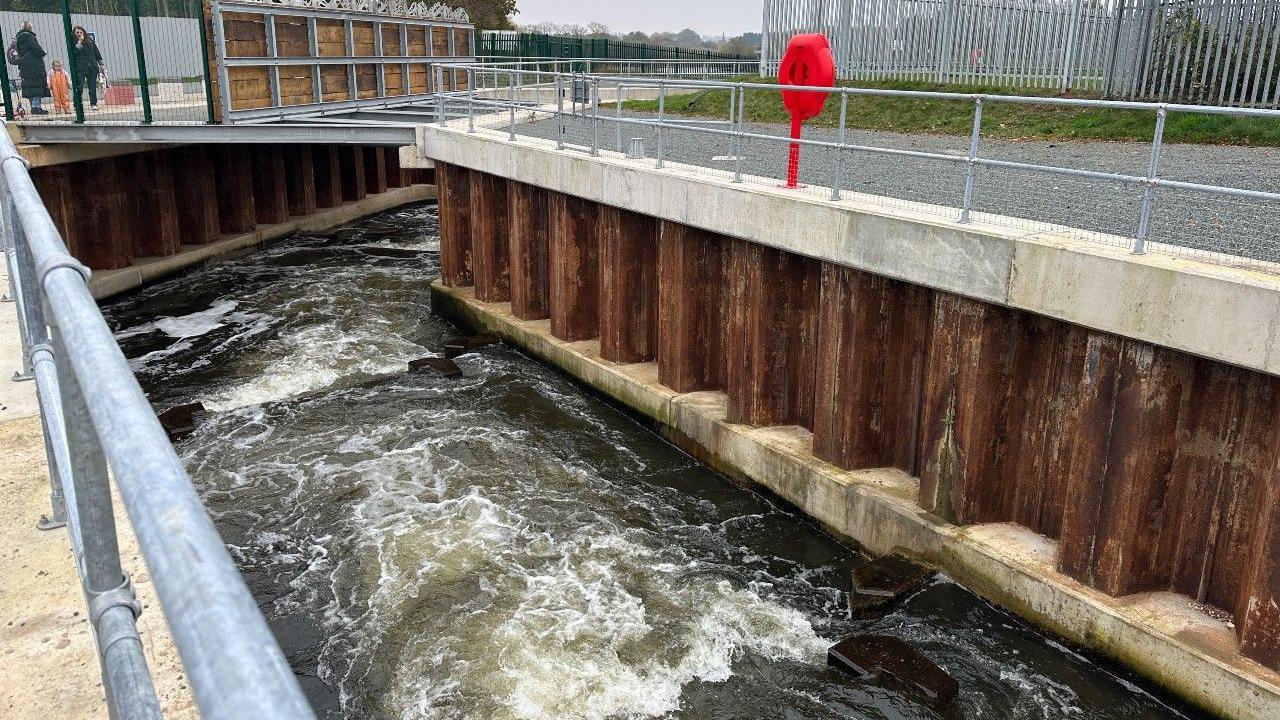
The site includes a viewing area for members of the public to see it in action
The design also takes into account the different needs of the eel, and ensure the critically endangered species can swim up the river.
Mr Lawrie said: "It is fitted with eel tiles. In effect, they are like bristles running the whole length of the pass.
"Eels swim in a slightly different way to most other fish and it's important we accommodate their requirements."
The fish pass includes a two metre-high, fully-automated gate, which constantly monitors the flow rates in the River Trent, adjusting the pass to match the wider levels.
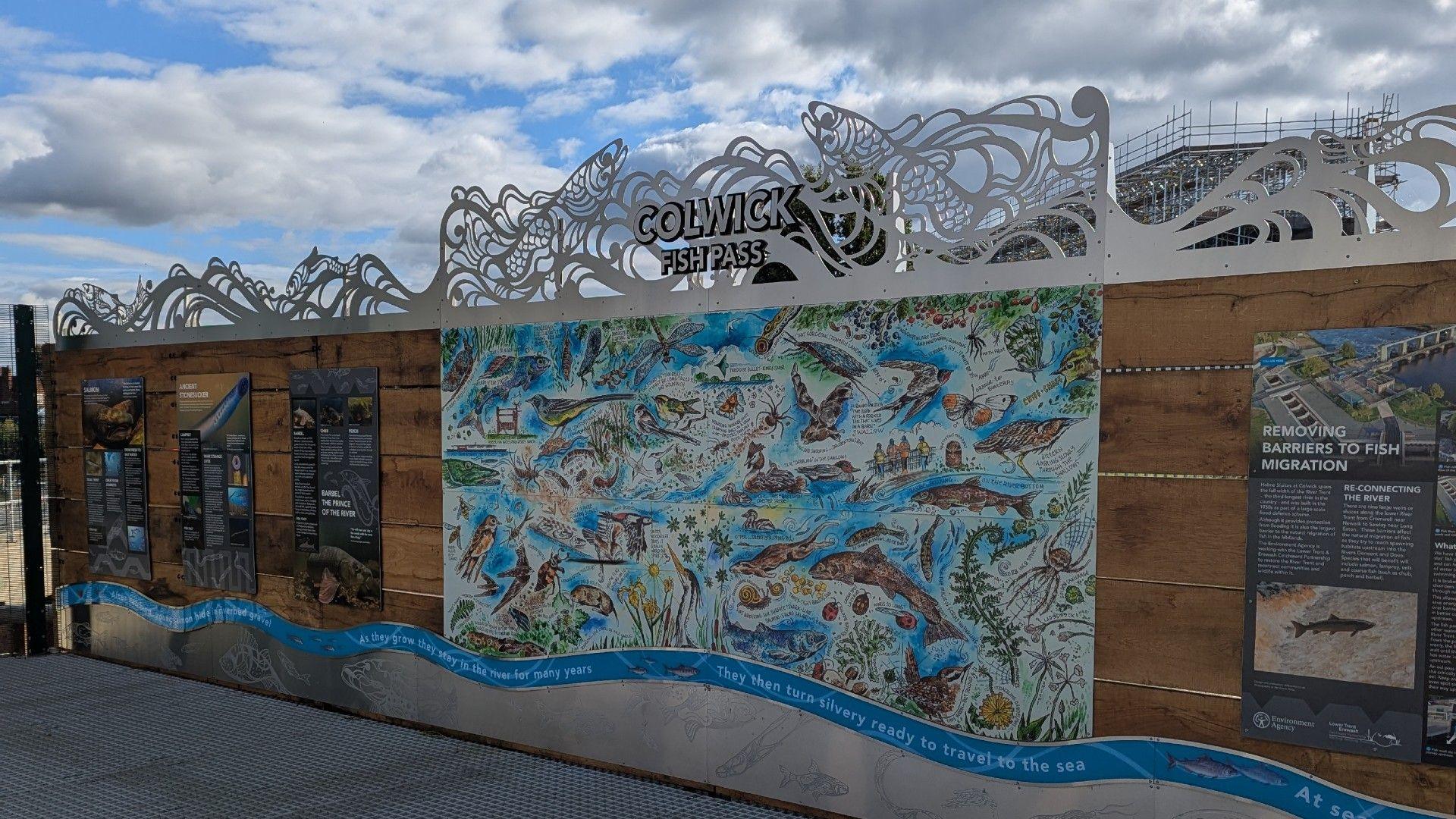
The "direct environmental benefits" of the pass will be £18.6m, according to the Environment Agency
The Environment Agency estimates the "direct environmental benefits" will be worth £18.6m.
This includes 60km (37 miles) of river improvement - from poor to good status for fish - as well as 60km of new spawning habitat immediately upstream of the barrier.
It is expected this will encourage increased sporting and leisure activities, such as angling and river tourism.
Interpretation boards and a viewing area have also been installed to give the public an explanation of the site and its purpose.
Get in touch
Tell us which stories we should cover in Nottingham
Follow BBC Nottingham on Facebook, external, on X, external, or on Instagram, external. Send your story ideas to eastmidsnews@bbc.co.uk, external or via WhatsApp, external on 0808 100 2210.
- Published26 March 2024
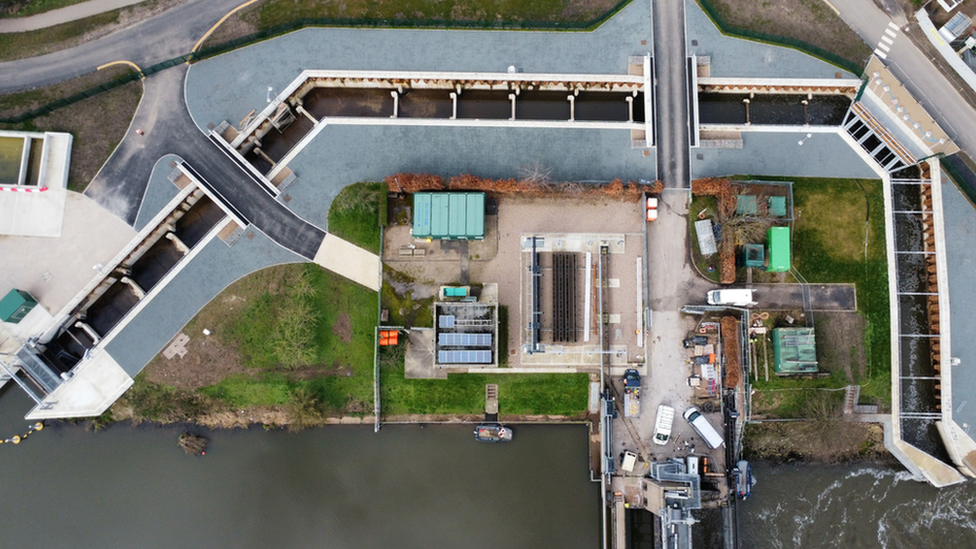
- Published9 June 2023
